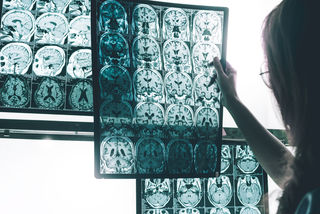Health
Dispelling Three Popular Myths About Alzheimer's
Be inspired to build better brain health by knowing the facts about Alzheimer's.
Posted December 7, 2017 Reviewed by Devon Frye

Alzheimer’s disease has been on the minds of many in recent years, particularly after Bill Gates’ large investment in the Dementia Discovery Fund to find a cure.
This intensified focus provides an opportunity for each of us to reflect on the importance of our own brain health—and to consider the benefits of setting a goal to boost brain health and minimize our risk of Alzheimer’s. In service of that goal, during each week this month, I will share a different science-backed strategy that has been shown to reduce the risk of Alzheimer’s. This Brain Boosting Plan will also include practical, engaging tips to put the strategies into action in your daily life.
But first, let’s correct a few myths that often unwittingly prevent us from engaging in behaviors that build better brain health and lower our risk of Alzheimer’s:
Myth 1: Alzheimer’s is caused by genetic factors.
Fact: Although certain genetic factors increase the risk of developing Alzheimer’s, only 1 percent of cases of Alzheimer's are caused by genetic factors.
The risk gene for Alzheimer’s—Apolipoprotein E4 (or APOE e4)—is located on chromosome 19, and is involved in the transport of cholesterol in the body and the clearing of beta-amyloid protein in the brain. (Beta-amyloid occurs naturally in the brains of all individuals, but has also been linked to Alzheimer’s when it clumps together abnormally.) Inheriting one copy of the APOE e4 gene results in a two-to-four times greater likelihood of developing Alzheimer’s, while inheriting two copies (one from each parent) results in a 9-to12-fold increase in risk. However, about 50 percent of individuals with one copy of APOE e4 do not go on to develop Alzheimer’s. In addition, about 60 percent of people with Alzheimer's do not have a genetic risk for the disease.
Given that there are multiple nongenetic risk factors for late-onset Alzheimer’s—including age, sex (females are twice as likely to develop Alzheimer’s), vascular health, and several lifestyle factors—many researchers have likened Alzheimer’s to other diseases that have multiple causes, and are thus unlikely to have a single cure, such as heart disease. Paradoxically, however, it is the multifaceted nature of Alzheimer’s risk factors that create opportunities to change the trajectory of lifestyle-related behaviors.
This realization is much more empowering than believing the myth that Alzheimer’s is caused solely by genetic factors that are out of our control.
Myth 2: You cannot lower your risk of Alzheimer’s.
Fact: You can significantly lower your risk of the most common form of Alzheimer’s by engaging in certain behaviors.
There is no need to buy supplements, brain games, or other specialty products to reduce your risk of Alzheimer’s. Rather, research has shown that multiple lifestyle factors are powerful in reducing risk, including cardiovascular exercise, a brain-healthy diet, minimizing vascular risk factors (such as diabetes, high blood pressure, and cholesterol problems), maintaining a healthy weight, engaging in stimulating mental activities that promote new neuronal connections, stress management, adequate sleep, and social engagement.
Although implementing these lifestyle changes seems straightforward, research has highlighted specific strategies to use—and not to use. In addition, some lifestyle strategies are more powerful than others.
Myth 3: If a person has abnormal brain cells associated with Alzheimer’s, they will exhibit the symptoms of Alzheimer’s.
Fact: Many people have had the cellular abnormalities associated with Alzheimer’s, but have not shown symptoms of the disease.
In their historic, long-running study of nuns, Dr. David Snowdon and colleagues found that greater numbers of abnormal cells in brain tissue at autopsy (e.g., beta-amyloid plaques and neurofibrillary tangles) were associated with greater memory impairment. However, they also noticed that about 58 percent of nuns with mild cellular abnormalities, 32 percent of nuns with moderate abnormalities, and even 8 percent of nuns with severe cellular abnormalities never exhibited Alzheimer’s symptoms. Similarly, recent research has shown that some "Super Agers" (individuals between 60 and 85 with memory skills similar to much younger adults) had Alzheimer’s-related cellular changes, but never expressed symptoms.
How are these findings possible? The theory of "cognitive reserve" is a leading explanation. The theory was developed in the late 1980s to describe a brain’s ability to “work around” or compensate for cellular abnormalities by relying on other neural connections that were previously built through engagement in stimulating mental activities. The process of developing cognitive reserve is akin to building extra highways in the brain, with the goal that if one highway is impacted by cellular abnormalities, the brain’s traffic (neural signals) can continue to flow.
By debunking myths about Alzheimer’s, we become empowered to proactively improve our brain health and add optimism to our dialogue about Alzheimer’s. Let’s lower our risk together.
Facebook image: Billion Photos/Shutterstock
LinkedIn image: fizkes/Shutterstock




